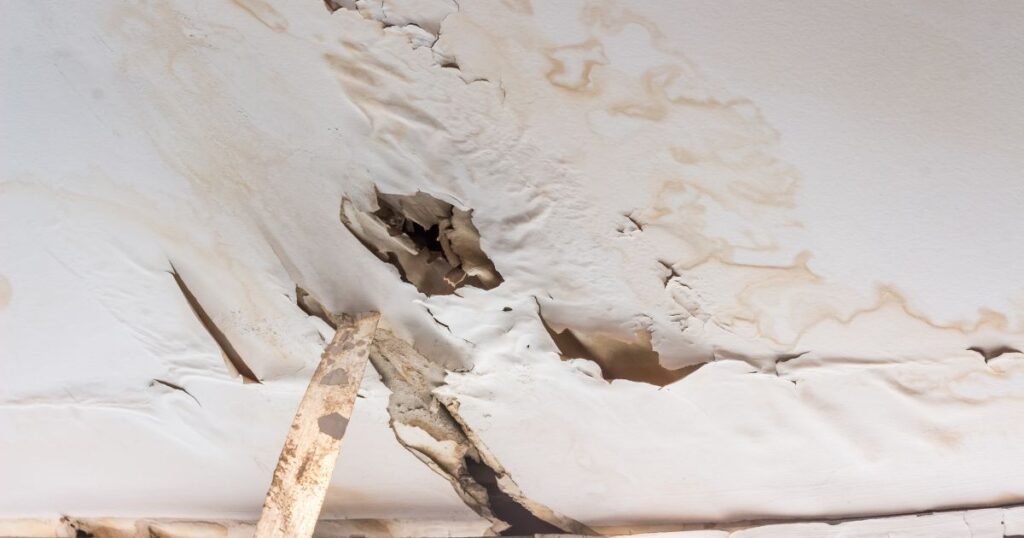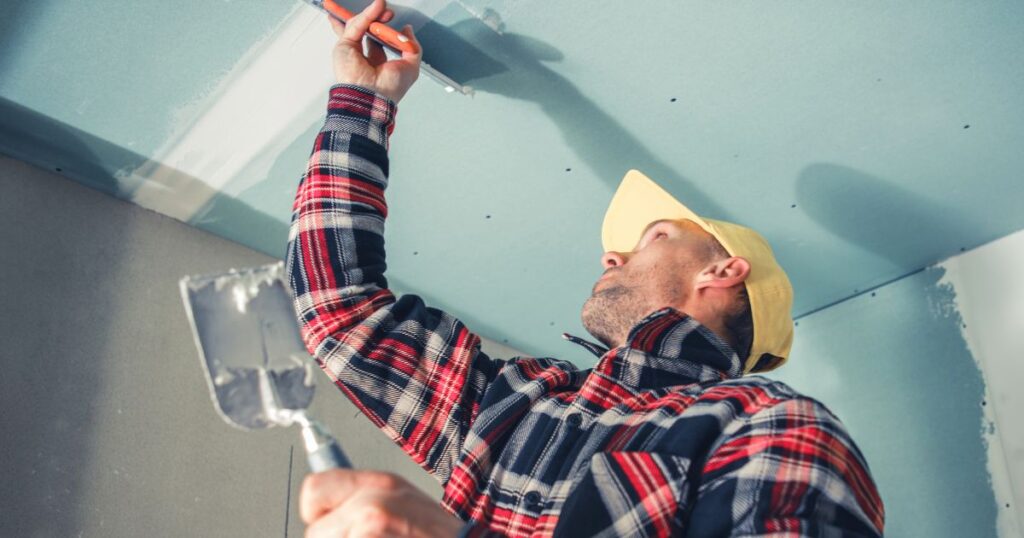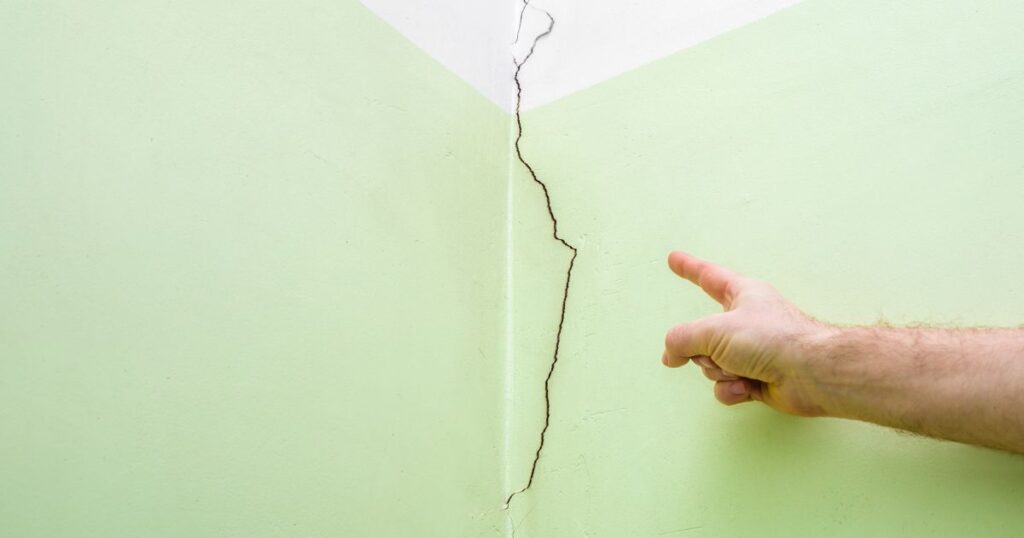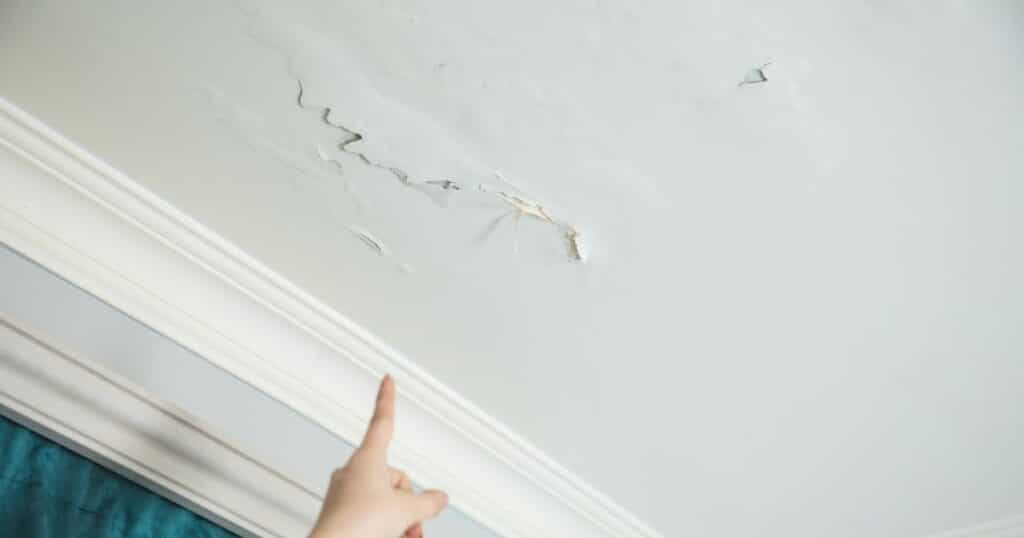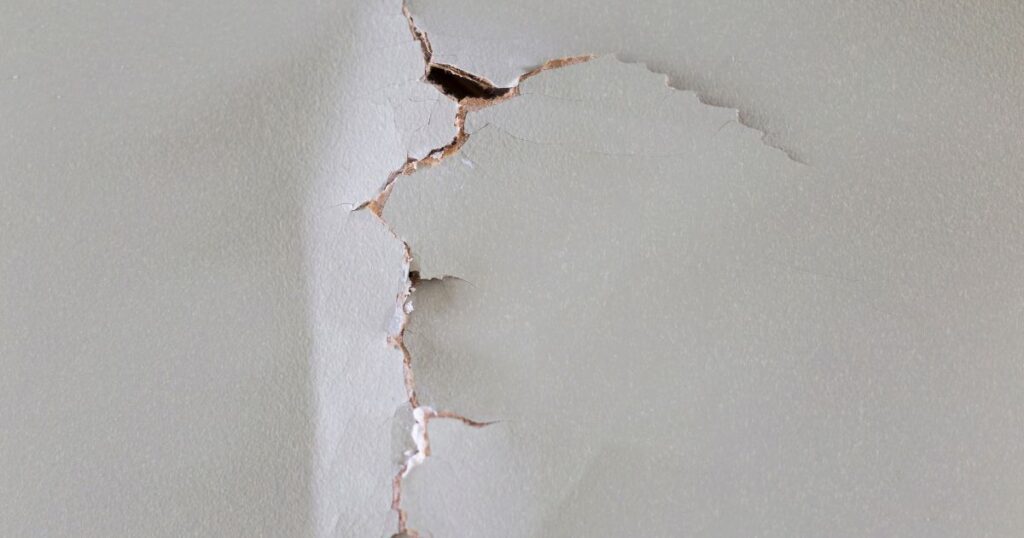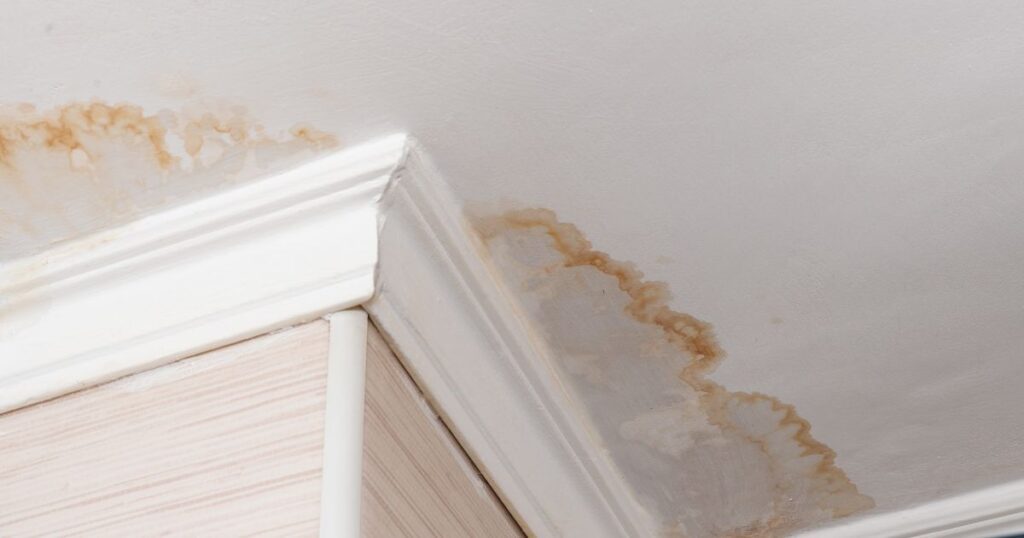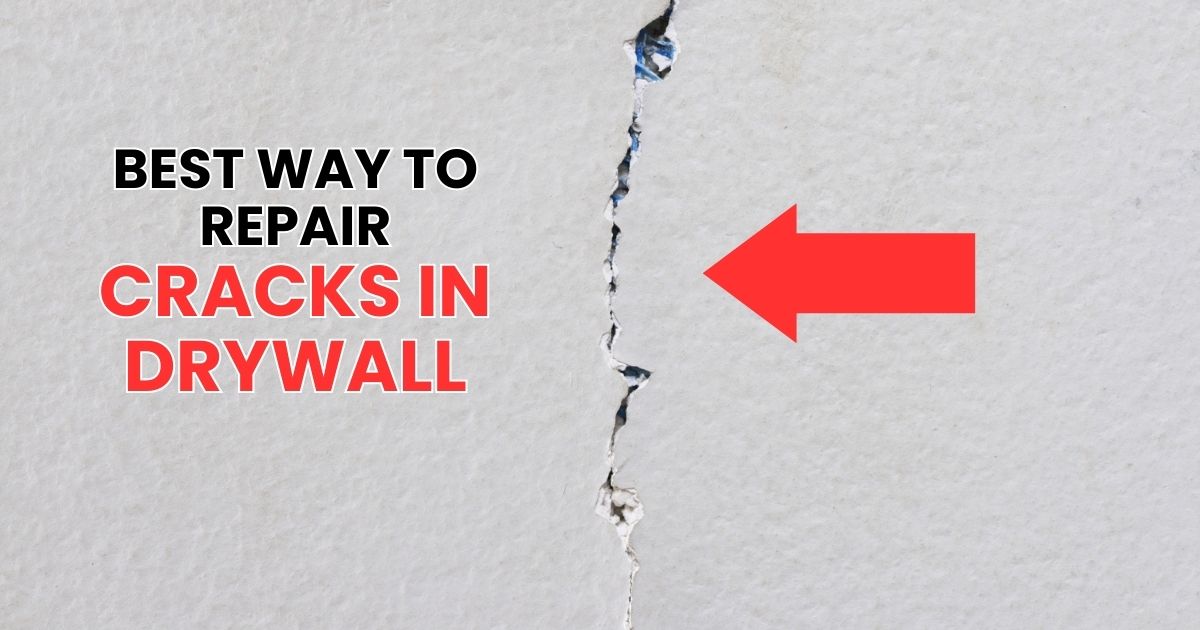
A Well-Kempt Home is a Happy Home
There’s nothing quite like the satisfaction of living in a clean, organized, and well-maintained home. However, keeping up with maintenance can be daunting, especially when it comes to fixing cracks in drywall.
These pesky cracks can appear out of nowhere and ruin the aesthetic of your beloved home. But don’t fret!
In this article, we will discuss the best way to repair cracks in drywall so that you can restore your walls to their former glory. It’s important to maintain a well-kempt home not just for the aesthetic value but also for the health and safety of you and your family.
The Importance of Maintaining a Well-Kempt Home
A well-kempt home goes beyond just having an attractive living space. It also promotes good hygiene and prevents potential hazards such as mold growth or pest infestations. Regular maintenance ensures that these issues are addressed before they escalate into major problems that will require costly repairs.
Furthermore, maintaining a clean and organized living space has been linked to improved mental health and productivity. Cluttered environments can lead to feelings of stress, anxiety, and overwhelm, which can negatively impact one’s overall well-being.
The Common Problem of Cracks in Drywall
Cracks in drywall are a common occurrence in many households. They often appear due to settling or temperature changes which cause contraction or expansion within the walls. Other factors, such as moisture or poor installation techniques, can also contribute to their formation.
Not only are these cracks unsightly, but they can also compromise the structural integrity of your walls if left unaddressed. This is why it’s important to fix them as soon as possible.
The Best Way to Repair Cracks in Drywall
Now that we understand the importance of maintaining a well-kempt home and the common problem of cracks in drywall let’s talk about how to fix them. The best way to repair cracks in drywall involves several steps, including identifying the cause of the crack, preparing the area for repair, applying drywall tape and joint compound, sanding and priming, and finally, painting over the repaired area.
It’s important to note that there are different methods for repairing cracks depending on their severity. For minor cracks, simply filling them with the joint compound may suffice.
However, for larger or more severe cracks, additional steps such as using drywall tape or skim coating may be necessary. Fixing cracks in drywall might seem like a daunting task, but it’s an essential part of maintaining a well-kept home.
By following the steps outlined in this article, you can restore your walls to their former glory and prevent potential hazards from arising. So don’t procrastinate any longer, grab your tools and get started on repairing those pesky cracks!
Understanding the Cause of Cracks
The insinuating section on how cracks can form due to various factors such as settling, humidity, or temperature changes.
If you’re a homeowner, you know that cracks in your drywall can be a headache. But do you know what causes these unsightly marks? Unfortunately, there are many factors that contribute to this problem.
One of the most common causes is settling. As homes age, they can shift and settle unevenly, causing small fissures in the drywall.
Humidity is another contributing factor to this issue. When moisture accumulates in walls or ceilings due to condensation or other reasons, it can cause cracking and damage over time.
Similarly, temperature changes can put stress on the materials used in construction, causing them to expand and contract, leading to cracks. Now that we’ve identified these culprits let’s talk more about how they cause problems for your drywall.
Settling tends to lead to long hairline cracks, which can be difficult and time-consuming to repair properly without proper techniques for repairing drywall cracks. On the other hand, humidity and temperature changes may cause larger patching and filling drywall cracks – sometimes even resulting in complete sections of your wall needing restoration of smoothness from cracked drywall.
Identifying the type and severity of the crack.
When it comes down to it, identifying what type of crack you have is key when trying to find the best way to repair cracks in drywall. There are several types, including hairline (smaller openings), vertical (cracks running up-down), horizontal (cracks running left-right), spider-webbing (multiple small branching), and settling (long hairline), among others. It’s important not only to identify what type of crack you have but also its severity as well.
A minor cosmetic issue might require a simple sanding and priming to repair drywall cracks, but a larger, more complicated issue could require mudding and sanding drywall cracks, filling and sealing cracks in drywall, or even replacing entire sections of the wall. Identifying the severity of the crack also means understanding whether it’s just cosmetic or indicative of a structural issue.
While some minor hairline cracks might be caused by settling, others could be symptoms of serious issues like foundation problems. If you’re unsure about what’s causing your crack, it’s always best to consult with an expert on cracked drywall repair methods before attempting to fix anything yourself.
Understanding the cause(s) is an important step in troubleshooting crack repairs in drywall. This will not only help you better identify what type of damage you have but also give you an idea as to how extensively it needs to be repaired.
Tools and Materials Needed for Repairing Drywall Cracks
Tips for effective drywall crack repair
Repairing a crack in drywall can seem overwhelming, but with the right tools and materials, it doesn’t have to be. Before you begin, make sure you have everything you need to complete the job. Here are some tips for gathering the necessary tools and materials.
Tools for repairing cracks in drywall
The first step in repairing a crack in drywall is gathering the necessary tools. You will need a utility knife, sandpaper, spackle or joint compound, a putty knife, and drywall tape. These tools are essential for creating a seamless finish on repaired drywall cracks.
Techniques for achieving a seamless finish on repaired drywall cracks
To achieve a seamless finish on repaired drywall cracks, it’s important to use the right techniques. Start by applying mesh or paper tape over the crack to reinforce it.
Then apply joint compound or spackle over the tape with a putty knife. Sand down any bumps or rough spots until the surface is smooth and level with surrounding areas.
Mudding and sanding drywall cracks
Mudding and sanding are important steps in repairing cracked drywall because they help create a smooth surface that can be painted over easily. Mudding involves applying a joint compound or spackle over the taped area to fill gaps between strips of tape. Once mudded, allow sufficient time to fully cure before proceeding with sanding.
Sanding and priming repaired drywall cracks
After the mudding has fully cured (usually overnight), use fine grit sandpaper (220-grit) to smooth out any rough spots left by the muddling process until level with the surrounding area. Finally, prime the newly patched area using a pre-mixed drywall primer or thin down compound with water to use as a primer.
Restoring smoothness to cracked drywall
Drywall cracks can be unsightly and make a room feel unfinished. Restoring smoothness to cracked drywall requires time and effort, but it’s worth the investment. By following these tips, you can repair any crack in your drywall and bring your room back to its former glory.
Preparing the Crack for Repair
Removing Loose Debris and Paint
Before repairing a crack in drywall, it’s essential to remove any loose debris or paint around the area. Neglecting this step can weaken the bond of your repair and cause your patchwork to fail prematurely.
It’s also unappealing to have chunks of old paint sticking out from your newly repaired wall. Techniques for removing loose debris and paint vary depending on the size of the crack and how much damage exists around it.
For larger cracks, a utility knife can be used to gently scrape away any loose debris or paint. Smaller cracks may require using sandpaper to smooth out the surface before moving on to repair.
Preventing future cracks in drywall is just as important as fixing existing ones. Removing all old debris ensures that there isn’t anything left behind that may cause new cracks later on down the line.
Applying Primer for Proper Adhesion
One common mistake when repairing drywall is skipping over priming before applying patching compound or spackle. Skipping this step can result in uneven absorption of moisture and lead to cracking later on down the line.
When preparing a crack for repair, apply primer with a brush or roller over all areas where you will be patching, including over existing paint. Allow ample time for drying before moving onto spackling with joint compound or another filler material.
Sanding and priming repaired drywall cracks is an essential step in achieving a professional-looking finish. Without proper preparation beforehand, you may end up with lumps, bumps, and visible seams that detract from your wall’s overall appearance.
Techniques for achieving a seamless finish on repaired drywall cracks include using fine-grit sandpaper, applying several coats of spackle (allowing each coat to dry thoroughly), sanding between coats, and finishing off with a final sanding before priming. Using a joint compound for crack repair is a popular choice for many DIY homeowners.
However, it’s essential to remember that the quality of the joint compound and how you apply it will determine the effectiveness of your repair. Taking time to prepare your crack for repair by removing any loose debris or paint and applying primer is crucial.
Skipping these steps can lead to an unprofessional-looking finish, and you may end up redoing everything all over again sooner than you anticipated. The extra time spent preparing will be well worth it in the long run when your newly repaired wall looks smooth, seamless, and professional.
Applying Drywall Tape: A Crucial Step in Repairing CracksSeam Tape for Crack Repair
When patching and filling drywall cracks, it is crucial to apply a layer of drywall tape over the crack. This is where seam tape comes in, as it is specifically designed to hold the spackle or joint compound in place, ensuring that the crack will not reappear after repair.
Filling and Sealing Cracks in Drywall
Filling and sealing cracks in drywall without using drywall tape may seem like an option for a quick fix, but this approach is likely to fail over time. Without a layer of tape to reinforce the seam, the joint compound will eventually crack under stress, leading to more extensive damage down the line.
The Importance of Using Drywall Tape
Using drywall tape ensures that there are no gaps left behind after repairing the crack as it gives extra support to the seam. It also prevents moisture from seeping into the repair area and causing further damage.
Tips for Effective Drywall Crack Repair
When applying drywall tape, make sure it runs along both sides of the crack equally. It should be at least an inch wider than the actual gap so that there’s enough room for spackle or joint compound on either side. Take your time while applying and smoothing out each layer so that you can get a seamless finish once you’re done.
Matching Texture on Repaired Drywall Cracks
If you want your repaired area to blend seamlessly with its surroundings, use mesh tape instead of paper, as it creates less bulk than paper tape does and gives a smoother finish overall. Once your repair job has been completed, try matching texture on repaired drywall cracks by using sandpaper or a sponge with some water and primer. This way, the repaired area will look just like the rest of your wall.
Don’t Skip Applying Drywall Tape
Not applying drywall tape while repairing cracks in drywall is a recipe for disaster. It may seem like an extra step, but it is essential to ensure that your repair job lasts for years to come.
Using mesh or paper tape reinforces the cracks and prevents further damage from occurring. Plus, not using tape could lead to an uneven surface, which would require more sanding and patching work.
If you want your walls to look smooth and seamless after repair, you cannot skip this vital step. Some people may choose not to use drywall tape because they think it’s hard or time-consuming.
But in reality, it’s quite simple if you follow the correct steps. Take some time out of your day and follow our step-by-step guide to repairing cracks in drywall – including applying drywall tape – for the best results.
Applying drywall tape is a crucial part of patching up cracks in drywall that cannot be skipped or ignored. Without this vital layer of reinforcement on both sides of the crack, any repair job will most likely fail over time, leading to additional expenses for future fixes.
Spackling and Sanding: Restoring Smoothness to Cracked Drywall
Creative Spackling Technique for a Smooth Finish
Ah, the joys of spackling. Is there anything more satisfying than filling in a gaping hole or crack in your drywall? But let’s be real, not all spackles are created equal.
If you’re looking for the best way to repair cracks in drywall and achieve a smooth finish, then listen up. First things first, make sure you have a high-quality joint compound on hand (none of that cheap stuff from the dollar store).
When applying the spackle, use a putty knife or trowel to spread it over the crack with even pressure. Don’t go too thick or too thin, aim for an even layer.
Next comes the fun part – sanding. But hold your horses!
Before you touch that sander, make sure the spackle has completely dried. You don’t want to ruin all your hard work by sanding too soon.
Now when it comes to sanding, some folks might advise using fine-grit sandpaper-like 220 or higher. But let me tell you something – that’s not gonna cut it if you want a truly smooth finish.
My secret weapon? A wet/dry sandpaper with at least 400 grit – yes, you heard me right!
Wet your sandpaper and gently rub over the spackle until smooth. Rinse and repeat until you’ve achieved the perfect finish.
And voila! You now have beautifully restored drywall.
Why Sanding is Necessary Before Painting Over Repaired Area
Now that we’ve covered creative spackling techniques let’s talk about why sanding is necessary before painting over repaired areas of drywall. For starters, not sanding can lead to rough patches on your walls.
And let’s be honest, who wants that? Sanding allows you to smooth out any bumps or inconsistencies in the spackle or joint compound.
But it’s not just about aesthetics. Sanding also helps the paint adhere better to the repaired area, ensuring a long-lasting finish.
If you skip this step, your paint may start to peel or crack over time – and nobody wants that. So, before you even think about picking up that paintbrush, make sure you’ve sanded your repaired drywall until it’s nice and smooth.
Trust me, your future self will thank you for it. Spackling and sanding are crucial steps in repairing cracks in drywall and restoring a smooth finish.
Remember to use high-quality joint compounds and wet/dry sandpaper for optimal results. And don’t forget – always sand before painting over repaired areas!
Painting Over Repaired Area
The Right Paint for Cracked Drywall Repair
Choosing the right paint for your drywall repair is just as important as the repair process itself. After all, you don’t want to go through all the trouble of fixing that unsightly crack only to end up with a patch job that looks like it’s been Frankensteined together.
So what kind of paint do you need? Well, it depends on how extensive your repairs were.
If it was just a small crack, then you can get away with regular wall paint. But if you did a full-on repair job with joint compound and sanding, then you’ll need something more robust.
Enter primer. It’s not technically paint per se, but it is the base layer that makes painting over repaired drywall look seamless.
Primer helps hide any evidence of joint compound and texture differences between the repaired area and the surrounding wall surface. Primers are designed to fill small cracks and gaps in drywall surfaces, which can help create an even finish once painted over.
Another option is using paints formulated specifically for use on repairs like cracked drywall. They have stronger bonding properties than regular wall paints, so they adhere better to surfaces, making them ideal for repairing cracks or holes.
Matching Paint Color for Drywall Crack Repair
So now that we know what kind of paint we need, let’s talk about color matching. There’s nothing worse than spending hours repairing drywall cracks only to end up with an eyesore because your patchwork doesn’t match the surrounding areas well enough. The key here is preparation before painting over the repaired areas by matching paint color before application to seamlessly blend patched areas into existing walls.. Start by taking a sample of your existing wall color (if possible) from an area that won’t be seen easily, like behind furniture or in a closet door frame).
Take it to your local home improvement store and have them match it as closely as possible. Some stores even offer custom paint-matching services with the help of technology.
Remember, it’s better to take a little extra time to make sure the color matches than to rush and end up with a visible patch job. A well-done drywall crack repair is an art, don’t let poor color matching ruin your masterpiece.
Sealing and Finishing
Once you’ve painted over the repaired area in matching color, you still need to seal it with a coat of clear acrylic sealer or clear coat. This is especially important if the repaired area is in a high moisture area like the bathroom or kitchen, as it helps prevent future water damage that may lead to future cracks.
After sealing patched areas, allow them enough time to dry before applying finishing touches such as sanding or texturing. Texturing may be necessary if the surrounding wall has a different texture than patched areas from repairs made earlier on drywall cracks.
Sanding needs to be done carefully so that any unevenness between patched areas and surrounding wall surface is eliminated for a smooth finish Fixing cracks in drywall can be tricky, but with the right tools, techniques, and products at hand while keeping key points such as priming before painting over the repaired area and matching paint color for best results can make all the difference in restoring smoothness to cracked drywalls walls for years to come.
Frequently Asked Questions
How do you permanently repair cracks in drywall?
To permanently repair cracks in drywall, start by widening the crack slightly with a utility knife, then apply a high-quality joint compound or spackle using a putty knife. Smooth out the compound, let it dry, sand it lightly, and repeat the process if necessary. Finally, prime and paint the repaired area for a seamless finish.
What is the best crack repair for drywall?
The best crack repair method for drywall involves using a flexible joint compound or spackle specifically designed for crack repair. Additionally, embedding drywall tape over the crack before applying the compound can provide added reinforcement and prevent future cracking.
Can cracked drywall be repaired?
Cracked drywall can be repaired. Depending on the size and severity of the crack, it may require widening the crack, filling it with joint compound or spackle, and finishing with sanding, priming, and painting to restore the appearance and structural integrity of the drywall.
What material fixes cracks in walls?
Cracks in walls can be fixed using various materials such as joint compound, spackle, or patching plaster. These materials are applied to the crack and surrounding area to fill and smooth out the surface.
Is there paint that fills cracks?
There are paints available that have filling properties to some extent, such as elastomeric or crack-filling paints. These paints are designed to stretch and fill small cracks, but for more significant cracks, it is recommended to properly repair and prepare the surface before painting.
What causes drywall to crack?
Drywall can crack due to a variety of reasons, including structural movement, settling of the building, temperature and humidity changes, or improper installation. Other factors, such as impacts, vibrations, or insufficient support behind the drywall, can also contribute to cracking. Understanding the underlying cause of the cracks can help in implementing appropriate repair techniques and preventing future cracking.
Conclusion
Repairing drywall cracks can be a challenging and time-consuming task, but it’s important to take the time to do it right. As we’ve discussed, the best way to repair cracks in drywall involves several key steps.
First, you must identify the cause of the crack and assess its severity. Then, you’ll need to gather all necessary tools and materials before preparing the area for repair by removing any loose debris or paint.
Next, you’ll need to apply drywall tape and spackle or joint compound before sanding down the repaired area to achieve a smooth finish. Priming and painting over the repaired area will help blend it seamlessly with the surrounding walls.
Importance of taking time with each step
While it may be tempting to rush through these steps or skip some altogether, doing so will only result in a shoddy repair job that won’t stand up over time. Filling and sealing cracks in drywall requires patience and attention to detail.
For example, mudding and sanding drywall cracks should be done carefully and methodically for the best results. Skim coating cracked drywall is also essential for achieving a seamless finish on repaired areas – but this technique takes practice and precision.
Tips for effective drywall crack repair
One key tip for successful crack repairs is using joint compound for filling in gaps between pieces of drywall that have shifted over time – this method works well when two pieces of the wall meet at an angle. Additionally, matching texture on repaired drywall cracks can be tricky but is important for maintaining consistency throughout your home. Another critical tip is ensuring that you’re using high-quality tools for repairing cracks in your walls – subpar equipment will only make your job more difficult and time-consuming.
Preventing future cracks in drywall
While there are several techniques for repairing drywall cracks, remember that prevention is key. By identifying the common causes of drywall cracks and addressing them proactively, you can avoid the need for extensive repairs down the road.
For example, if your home is prone to settling due to changes in temperature or humidity levels, you may need to consider adding additional support structures or shims to keep your walls stable. Additionally, using high-quality paint and primer products can help protect your walls against cracking and other types of damage.
Overall, taking the time to repair cracks in your drywall correctly will pay off in the long run by ensuring that your home remains strong and structurally sound. With patience and attention to detail, you can achieve a seamless finish on repaired areas that blend seamlessly with surrounding surfaces – leaving you with a beautiful and well-maintained living space for years to come.

